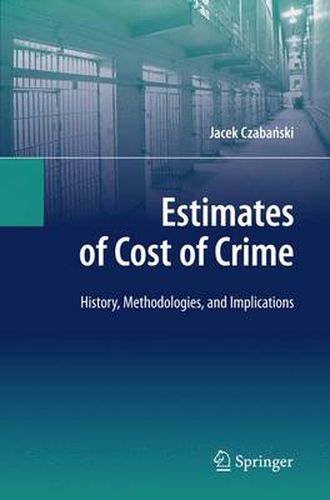Readings Newsletter
Become a Readings Member to make your shopping experience even easier.
Sign in or sign up for free!
You’re not far away from qualifying for FREE standard shipping within Australia
You’ve qualified for FREE standard shipping within Australia
The cart is loading…






This title is printed to order. This book may have been self-published. If so, we cannot guarantee the quality of the content. In the main most books will have gone through the editing process however some may not. We therefore suggest that you be aware of this before ordering this book. If in doubt check either the author or publisher’s details as we are unable to accept any returns unless they are faulty. Please contact us if you have any questions.
The mental suffering and agony, the ruined lives, the broken homes and hearts, the desolation and yearning and despair - who can measure the cost of crime? Eugene Smith, 1901 The anxiety people feel towards another people - the fear of crime - lies at the foundations of human society. The enormous burden that crime imposes on societies calls for ef?cient social arrangements and institutions. While intuitively obvious, the exact scope of this burden for a long time eluded measurement. With the emergence and development of quantitative methods in economics and statistics, the exercise of calculating costs of crime became possible, and indeed has been undertaken. The emerging ?eld of assessing costs of crime is still a controversial one, both in its methodology and applications. Many people would feel it absurd to calculate costs of crimes, particularly violent ones. What is a cost of murder, rape, or assault? Can any number meaningfully represent the villainous nature of such acts? These questions are undoubtedly good ones. In this book, I will argue that we can estimate costs of different crimes, and that such estimates are relevant for criminal law and crime policy. Notwithstanding the incommensurability of many consequences of crime, society every day makes numerous decisions how to tackle crime, and at least implicitly assesses the relative importance of the problem. Properly done costs of crime estimates make people’s evaluation more visible, and allow for more coherent public policy.
$9.00 standard shipping within Australia
FREE standard shipping within Australia for orders over $100.00
Express & International shipping calculated at checkout
This title is printed to order. This book may have been self-published. If so, we cannot guarantee the quality of the content. In the main most books will have gone through the editing process however some may not. We therefore suggest that you be aware of this before ordering this book. If in doubt check either the author or publisher’s details as we are unable to accept any returns unless they are faulty. Please contact us if you have any questions.
The mental suffering and agony, the ruined lives, the broken homes and hearts, the desolation and yearning and despair - who can measure the cost of crime? Eugene Smith, 1901 The anxiety people feel towards another people - the fear of crime - lies at the foundations of human society. The enormous burden that crime imposes on societies calls for ef?cient social arrangements and institutions. While intuitively obvious, the exact scope of this burden for a long time eluded measurement. With the emergence and development of quantitative methods in economics and statistics, the exercise of calculating costs of crime became possible, and indeed has been undertaken. The emerging ?eld of assessing costs of crime is still a controversial one, both in its methodology and applications. Many people would feel it absurd to calculate costs of crimes, particularly violent ones. What is a cost of murder, rape, or assault? Can any number meaningfully represent the villainous nature of such acts? These questions are undoubtedly good ones. In this book, I will argue that we can estimate costs of different crimes, and that such estimates are relevant for criminal law and crime policy. Notwithstanding the incommensurability of many consequences of crime, society every day makes numerous decisions how to tackle crime, and at least implicitly assesses the relative importance of the problem. Properly done costs of crime estimates make people’s evaluation more visible, and allow for more coherent public policy.